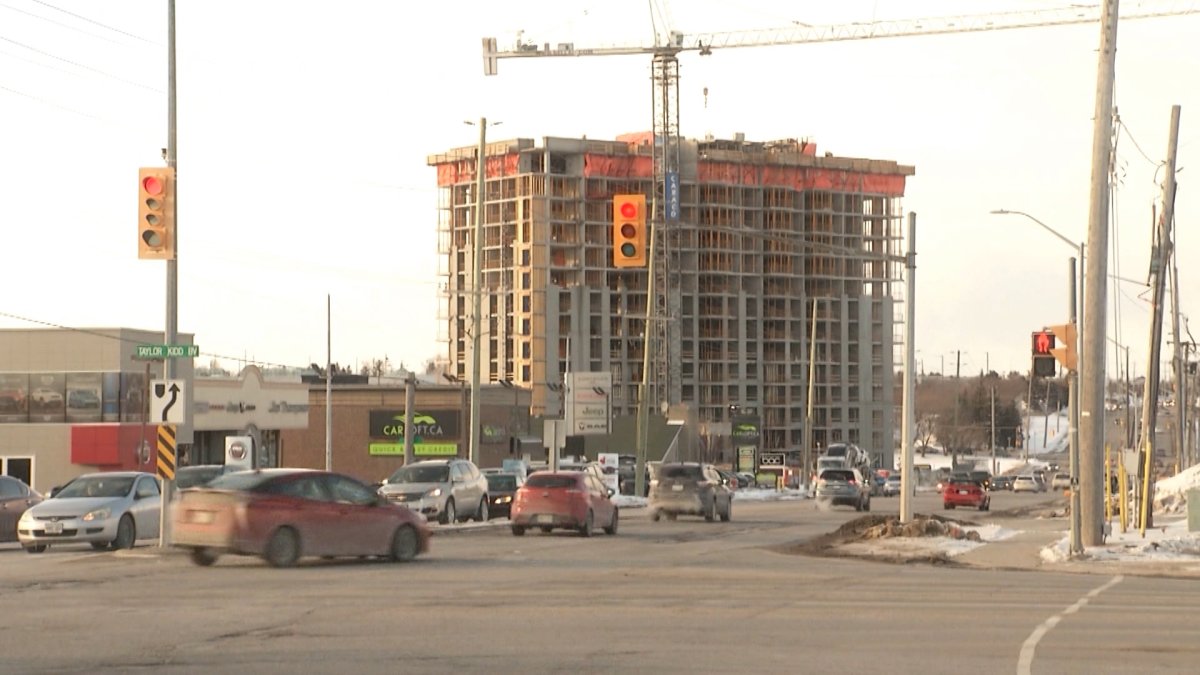The city of Kingston has come up with a discussion paper which, it hopes, will help address the city’s rental housing shortage, climate emergency and downtown highrise battles in one new omnibus policy.

The mid-rise and tall buildings policy is touted as a first-of-its-kind strategy in Canada to encourage growth that is both smart and environmentally responsible through a series of proposed initiatives.
Chief planner Paige Agnew says it involves bringing clarity to existing municipal land use rules that guide development that will, among other things, set building design expectations and establish allowable locations for new buildings taller than four stories.
“This is about making development in the right places easier and the wrong places harder,” she explained.
Agnew acknowledges the current Official Plan and zoning policies have often led to confusion among developers and legal appeals from residents, mainly over attempts to preserve the city’s collection of 19th century downtown heritage buildings from being overshadowed by residential towers.
“When the policy is confusing the market responds with mixed demands,” she explained.
While development nodes will still be a fixture of the downtown, the city is also targeting main transportation corridors in the fast growing suburbs for “strategic” forms of housing development.

On the flip side, height and density will be limited in locations deemed unstrategic by the city.
A proposed city-wide development map — outlining the preferred building locations — is to be unveiled Friday, Nov. 15 in advance of an information report to the planning committee on Nov. 21.
Kingston mayor Bryan Paterson says the map will form the basis of a public discussion.
“For example, maybe on the north block next to the Leon’s Centre we’ll allow tall buildings, but anything from Princess Street south, that’s something we’ll only allow buildings up to four to six stories.”

Vancouver-based urban designer Brent Toderian says the overall aim of the new policy, still in draft form, is to bring a level of clarity on ‘where’ and ‘how’ new development can take place, while supporting city council’s goals.
“The work we are presenting is not business as usual,” said Toderian, who was retained by the city to help draft the new guidelines.
One of the goals is to address Kingston’s declaration earlier this year of a climate emergency.
The proposal will involve mapping out specific areas where the city will encourage future growth of tall and mid-rise buildings, such as along Princess Street, Bath Road, Gardiners Road and other key arterial routes where there is already ample municipal services and easy access to public transit.
- Alberta to overhaul municipal rules to include sweeping new powers, municipal political parties
- Grocery code: How Ottawa has tried to get Loblaw, Walmart on board
- Military judges don’t have divided loyalties, Canada’s top court rules
- Norad looking to NATO to help detect threats over the Arctic, chief says
The proposed new design guidelines that developers will be expected to follow will focus on building height and width, stepbacks and setbacks, lively streetscape design, tower separation, integration of active transportation. They will also frown on large surface parking lots at residential towers to ensure that new housing is not as car dependent.
These and other changes will allow the ‘green lighting’ of projects faster, officials claim.
As well, the city wants to encourage the construction of tall wood-framed buildings, which are touted as cheaper to build, more environmentally friendly than traditional concrete slabs, and safer to construct with new timber technology.
Toderian expects the National Building Code could be altered next year to permit wood-framed buildings as high as 12 stories — double the current limit in Ontario.
Kingston also plans to pre-zone parcels of private land, such as shopping malls and parking lots, to spur new residential development in case the owners choose to do so.
Agnew says the tall buildings study took on an added urgency since council’s climate emergency, and the scope was broadened to include new policies focused not just on height but locations.
“This work is needed for the city to walk the talk on climate change.”
The city plans to hold six weeks of public consultations and to gather feedback on the policy before presenting it to politicians for final approval in February 2020.
While land use and climate change form a large part of the work, the city’s planning department also plans to delve into market choices and economic conditions to justify its work – areas normally left to the purview of developers to help justify new builds.
“If it’s done right it should lead to less community battles,” Toderian predicted.
Officials are hopeful the new rules will lead to a collaborative relationship with developers, but concede there is already some unease over what’s being proposed.
“There will be controversy but this is what’s necessary to use smarter land use to address Kingston’s climate emergency,” Toderian added.
Agnew and Toderian, who commented via Skype, gathered media for a presentation of the new policy in advance of the public rollout.
He added: “It’s easy to declare a climate emergency. It’s harder to follow through with land use and transportation (changes).”
Stakeholder meetings are scheduled for the week of Nov. 18 along with a public open house Nov. 21 from 3 to 7 p.m. at Memorial Hall. As well, the city will accept online feedback until the end of December.







Comments